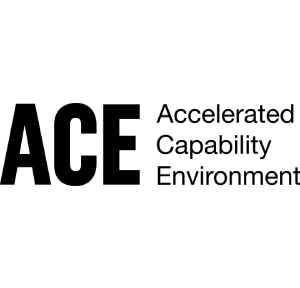Accessible documents policy
This policy explains how accessible the documents Accelerated Capability Environment (ACE) publishes on GOV.UK are.
Using our documents
The Accelerated Capability Environment (ACE) publishes documents in a range of formats, including PDF, Word (ODT) and Excel (CSV and ODS).
We want as many people as possible to be able to use those documents. For example, when we produce a document we make sure to:
-
provide a plain text webpage (‘HTML’) option
-
tag headings and other parts of the document properly, so screen readers can understand the page structure
-
include alternative text alongside non-decorative images, so people who cannot see them understand what they’re there for
-
avoid using tables, except when we’re presenting data
-
use plain English wherever possible
How accessible our documents are
All our new documents we publish should be fully accessible.
However, we know that some of our older documents (published before 23 September 2018) are not accessible. For example, some of them:
-
are in a print format and are not marked up in a way that allows screen reader users to understand them
-
are not tagged up properly - for example, they do not contain proper headings
-
use colour to indicate meaning
-
contain images and diagrams that do not contain alternative text
We don’t currently have plans to make these documents accessible, but if you need to access information in one of these document types, you can contact us at ace@homeoffice.gov.uk and ask for an alternative format.
What to do if you cannot use one of our documents
If you need a document we’ve published in a different format:
- email: ace@homeoffice.gov.uk
We’ll consider the request and get back to you in 5 working days.
Reporting accessibility problems with one of our documents
We’re always looking to improve the accessibility of our documents. If you find any problems not listed on this page or you think we’re not meeting accessibility requirements, contact us at ace@homeoffice.gov.uk.
Enforcement procedure
The Equality and Human Rights Commission (EHRC) is responsible for enforcing the Public Sector Bodies (Websites and Mobile Applications) (No. 2) Accessibility Regulations 2018 (the ‘accessibility regulations’). If you’re not happy with how we respond to your complaint, contact the Equality Advisory and Support Service (EASS).
Technical information about the accessibility of our documents
The Accelerated Capability Environment (ACE) is committed to making our documents accessible, in accordance with the Public Sector Bodies (Websites and Mobile Applications) (No. 2) Accessibility Regulations 2018.
The documents the Accelerated Capability Environment (ACE) publishes are partially compliant with the Web Content Accessibility Guidelines version 2.1 AA standard, due to the non-compliances listed below.
Non-accessible content
The content listed below is non-accessible for the following reasons.
Non compliance with the accessibility regulations
A few of our old documents have diagrams. These images do not have a text alternative, so the information in them is not available to people using a screen reader. This does not meet WCAG 2.1 success criterion 1.1.1 (non-text content).
We plan to add text alternatives for all diagrams as soon as we can. When we publish new documents we’ll make sure our use of diagrams meets accessibility standards.
Content that’s not within the scope of the accessibility regulations
Many of our older PDFs do not meet accessibility standards - for example, they may not be structured so they’re accessible to a screen reader. This does not meet WCAG 2.1 success criterion 4.1.2
The accessibility regulations do not require us to fix PDFs or other documents published before 23 September 2018 if they’re not essential to providing our services.
Any new PDFs or Word documents we publish will meet accessibility standards.
What we’re doing to improve accessibility
We’re improving accessibility by:
-
carrying out checks on all our new documents
-
creating accessible HTML content to meet the needs of our audience
-
reviewing the accessibility of older documents that are covered by the accessibility regulations
-
training our staff on how to create accessible documents
-
including accessibility as part of our ‘second pair of eyes’ checking process before publishing
